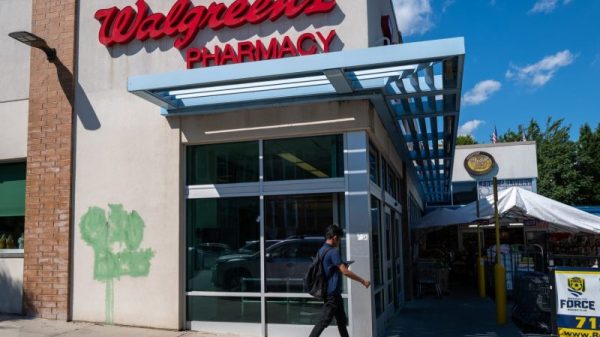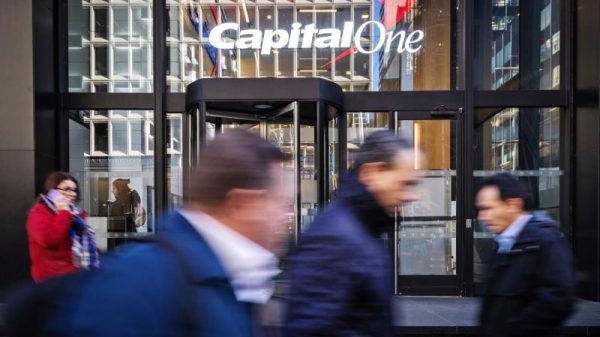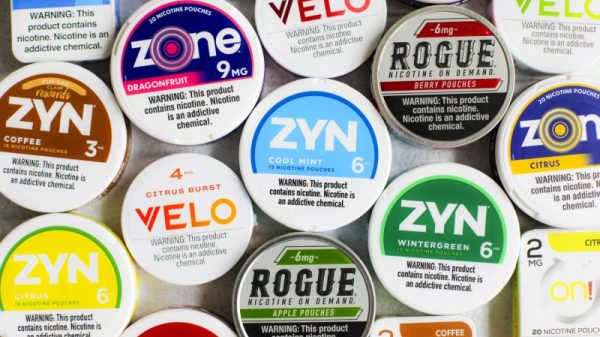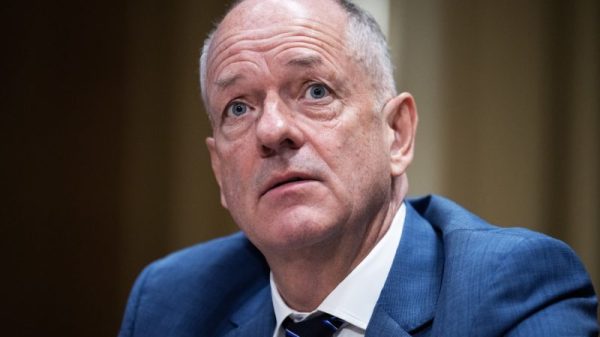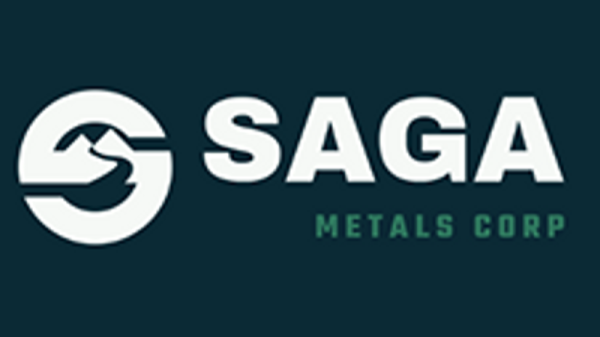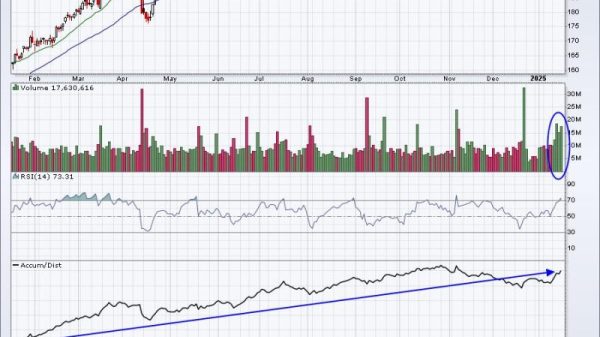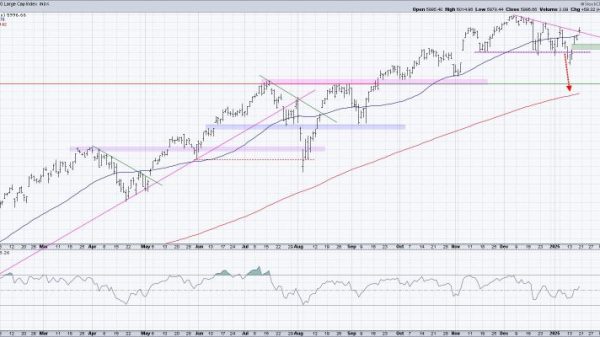Air travelers face a host of headaches on their journeys: slow security lines, long waits for plush lounges, the threat of delays or cancellations — and the airport Starbucks.
Many travelers, flight crews and even airport employees have at some point encountered long wait times for their Starbucks cappuccinos, cold brews and egg bites.
“They need to have a better system,” said Coresa Barrino, a Starbucks patron at New York’s LaGuardia Airport Terminal B earlier this month who said she had been waiting 10 minutes and counting for her coffee. The nursing assistant, who was taking a flight back to Charlotte, North Carolina, said the wait when she buys her coffee at a Starbucks in Charlotte is about two minutes.
The long waits have caught the attention of the coffee chain’s new CEO, Brian Niccol, who joined Starbucks from Chipotle in September, pledging to win back customers and reverse the company’s sales slump.
Niccol told investors he thinks that licensed locations, such as those inside Target stores or airports, are interested in following the company’s strategy of “getting back to Starbucks.”
“When I think about the airports and such, there’s such a huge opportunity for us to simplify some of the execution there so that we get people the great throughput that they want so they can get on their way,” Niccol said on the company’s quarterly conference call Oct. 30.
Starbucks’ airport location staff — and company technology — will be put to the test this week during some of the busiest travel days of the year. The Transportation Security Administration forecast a record number of travelers during Thanksgiving week and said Sunday, Dec. 1, could be the busiest day of the year, with more than 3 million people screened at U.S. airports.
The surge in air travel, especially during peak times such as Thanksgiving, has led to congestion in airport security lines, in lounges and at gates — problems that airlines and the federal government are trying to fix. For the aviation industry, bottlenecks at airport Starbucks are just another sign of soaring demand and overcrowded airports.
A record 1.05 billion people boarded airplanes going either to, from or between U.S. airports in 2023, narrowly topping the total in 2019, before the pandemic, according to the U.S. Department of Transportation.
Starbucks has recently struggled. Its sales fell for the third straight quarter in the period ended Sept. 30, as consumers pushed back against higher prices and ignored initiatives such as discounts and energy drinks aimed at bringing customers back. Same-store sales in the U.S. declined by 6% from a year earlier.
In late October, Niccol unveiled plans aimed at improving customers’ experiences and reviving the company’s sales, from bringing back condiment bars, to eliminating surcharges for dairy alternatives and cutting down the menu.
Cutting wait time is a key goal: He wants to trim service times down to four minutes, which would shrink long lines and improve the customer experience.
And while Starbucks started rolling out mobile order and pay to its airport locations in 2022, the change can sometimes add to the confusion and chaos at the cafe counter instead of resolving it. Plus, some travelers might not be regular Starbucks customers who already have the app downloaded.
Improving the coffee chain’s airport outposts could boost both sales and the brand’s reputation during a time when it needs it most. Even the customers Starbucks has lost might visit an airport location while they’re traveling.
With travelers returning in droves after the pandemic, it gives Starbucks and other restaurant chains a chance to boost sales.
Concessions contribute about 4% of U.S. airport revenue annually, according to the latest available Federal Aviation Administration data, but they’re an important feature to many passengers, who have limited time — and, often, energy — to fuel up before a flight.
At Dallas Fort Worth International Airport, revenue from food and beverage outlets is growing faster than passenger numbers, said Jennifer Simkins, the airport’s assistant vice president of concessions. The airport has become the world’s third-busiest for passengers, up from 10th place in 2019, according to Airports Council International.
Airlines are also packing more seats on their aircraft and in some cases are flying larger jets.
More passengers per plane means restaurants can become crowded during peak times with more customers waiting to be served and space limited, said Ursula Cassinerio, an assistant vice president at Moody’s Ratings who covers airports.
She noted that many airports have been undergoing major renovations, if not building new terminals. That means “more opportunities for revenue if you have more square footage for retail and restaurants,” she said.
The 25 busiest airports in the U.S. have an average of 80 food and beverage brands as options for travelers, according to data from market research firm Technomic.
A challenge for Starbucks is that licensees — not Starbucks itself — operate its airport locations.
Starbucks opened its first airport location with licensee HMSHost in 1991 at Seattle-Tacoma International Airport, which serves Starbucks’ hometown.
For nearly three decades, HMSHost operated the chain’s airport locations through an exclusive deal with Starbucks and gradually grew its airport footprint to roughly 400 outposts.
But in 2020, HMSHost ended the deal, giving the operator flexibility to offer more coffee options to airports.
While HMSHost still operates the overwhelming majority of Starbucks’ airport cafes, more operators, such as Paradies Lagardere and OTG, have since taken a swing at it.
HMSHost, Paradies Lagardere and OTG did not respond to requests for comment for this story.
“Airport locations are tricky because they can make good money, but operationally, at times, they can be very challenging,” said Mark Kalinowski, restaurant analyst and CEO of Kalinowski Equity Research.
Licensing its stores saves Starbucks the hassles of operating inside an airport, such as staffing problems, high rents and security checkpoints. And though the coffee chain is used to handling a surge of undercaffeinated customers in the mornings, the swell in demand at an airport can be even more erratic.
“A plane lands, and all of a sudden there’s a hundred people when there were zero people there before,” said Kevin Schimpf, director of industry research for Technomic.
The trade-off is that Starbucks makes less money from those licensed restaurants.
The company has more than 16,300 locations in the U.S. as of Sept. 24. But it only runs about 60% of those cafes itself; licensees operate the rest. That number includes its cafes in 47 of the 50 busiest airports in the U.S., according to Starbucks. The company did not disclose its current airport store count to CNBC.
In fiscal 2024, licensed locations accounted for 12% of Starbucks’ revenue, or $4.51 billion. From those stores, Starbucks collects only licensing fees, a percentage of monthly sales through royalties, and payments for supplying its coffee, tea and food to licensees, according to company filings.
For every dollar spent in a licensed store, Starbucks generates about 7 cents of earnings before interest, taxes, depreciation and amortization, according to estimates from Bank of America analyst Sara Senatore. Company-owned stores make about 23 cents per dollar spent, Senatore wrote in a research note in September.
If its business partners and third-party providers slack off, Starbucks’ brand could be damaged, the company noted in the risk factors section of its latest annual filing.
“The vast majority of customers, they don’t know whether that is a company-owned Starbucks or a licensed Starbucks,” Kalinowski said. “They just want their Starbucks. They want it made properly. They want it quickly. And they’re in a situation of heightened stress because they’re trying to get to their gate.”
Airports themselves have been adopting more technology in their restaurants to help move lines along.
Labor challenges have led to more kiosks and tablets inside airport restaurants, for example.
“It’s harder and harder to staff a lot of these restaurants, so any front-of-house savings that you can make by having consumers order on kiosks or tablets or whatever, that really, really helps,” Schimpf said.
Laurie Noyes, vice president of concessions and commercial parking at Tampa International Airport, said that “sometimes the airports are a little bit behind the street.” But she said the airport has made strides in offering more digital options and now, travelers can order food ahead of time via Uber Eats, and pick it up at airport restaurants.
Dallas Fort Worth offers DFWOrderNow, a website and platform available at digital kiosks so travelers can order food ahead. Simkins said the airport’s platform will reroute Starbucks customers to Starbucks’ own platform. Starbucks offers more than 170,000 possible drink orders, according to the chain’s website. “We just found the value in keeping the familiarity for their customers,” Simkins said.
Simkins said the airport is developing robotic technology for delivery to speed up service. It’s also experimenting with offering meal and retail bundles from airport restaurants and shops, she said, so passengers “no longer have to plan their route for multiple stops” in an airport.
A local coffee company, Fort Worth, Texas-based Ampersand, plans to open a robotic barista at DFW’s Terminal C, Simkins said. It will be available 24/7, to accommodate flight crews arriving at off-hours.
Simkins said popular chains still draw a crowd.
“There are some brands that people will line up for,” she said.
For Barrino, who was waiting for her coffee at LaGuardia, Starbucks is one of those companies.
“I just really love the brand,” she said.

